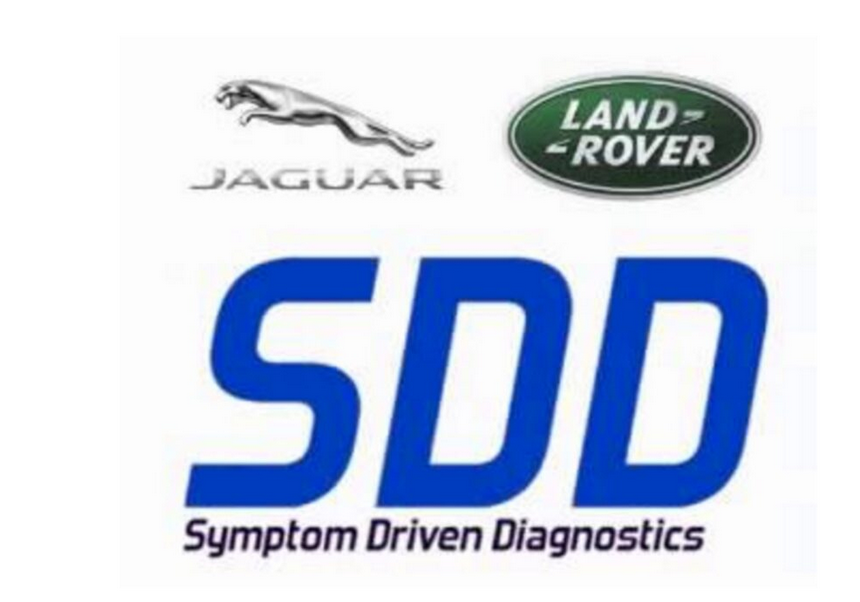
If you own a Range Rover or Jaguar, you may have encountered the frustrating experience of a gearbox or transmission failure. These problems can be difficult to diagnose and fix, leading to inconvenience and costly repairs. We also provide recommendations for reputable mechanics and dealer options to help you resolve your transmission problems quickly and efficiently. Whether you’re dealing with a gearbox failure in a Range Rover, Range Rover Evoque, or Jaguar, this article will provide you with the knowledge and resources you need to tackle the problem head-on.
Signs of Gearbox or Transmission Issues
It is important to be able to recognize the signs of gearbox or transmission issues in your Range Rover or Jaguar. Here are some common symptoms to look out for:
1. Gear Slippage: If you notice that your vehicle is slipping gears, such as jerking or jolting while accelerating or shifting gears, it may indicate a problem with your gearbox or transmission. This could be caused by a worn-out clutch or damaged gears, both of which can lead to a gearbox fault in your Range Rover.
2. Strange Noises: Unusual noises coming from your vehicle can be a sign of a gearbox or transmission issue. If you hear grinding or whining noises when you shift gears or while driving, it could be an indication of a gearbox fault in your Range Rover. This symptom could also be accompanied by a burning smell or a noticeable decrease in acceleration.
3. Delayed or Rough Shifting: If you experience a delay or roughness in shifting gears, it could be a sign of a transmission issue. This symptom can be caused by a variety of problems, such as low fluid levels, damaged shift solenoids, or a failing torque converter.
4. Warning Lights: If the “gearbox fault detected” warning light appears on your dashboard, it is important to take your vehicle to a mechanic as soon as possible. This warning light is a clear indication that your vehicle’s gearbox or transmission has a problem that needs to be diagnosed and fixed.
By recognizing these common symptoms, you can address any potential gearbox or transmission issues in your Range Rover or Jaguar before they develop into a more serious and expensive problem.
Common Gearbox Faults in Range Rovers and Jaguars
Range Rovers and Jaguars are luxury SUVs that are renowned for their exceptional performance, style, and durability. However, like all vehicles, they are not immune to faults, especially in their gearbox or transmission systems. Here are some of the most common gearbox faults that can affect Range Rovers and Jaguars:
Gearbox Fault Range Rover
One of the most common gearbox faults in Range Rovers is the failure of the selector lever mechanism. This can cause difficulty in shifting gears or complete transmission failure, resulting in a “gearbox fault” warning message appearing on the dashboard.
Transmission Fault Range Rover
Transmission faults in Range Rovers are often caused by a faulty solenoid pack, which can prevent the transmission from shifting gears smoothly. This can also cause a “transmission fault” warning message to appear on the dashboard.
Gearbox Fault Jaguar
Jaguars are also prone to gearbox faults, particularly with the XF and XJ models. One common issue is the failure of the mechatronic unit, which controls the transmission system. This can cause gear shifting problems, transmission failure, and a “gearbox fault” warning message on the dashboard.
Jaguar Gearbox Fault
In addition to the mechatronic unit failure, Jaguars can also experience issues with the valve body, which regulates the flow of hydraulic fluid through the transmission. This can lead to poor shifting performance, rough gear changes, and a “Jaguar gearbox fault” warning message on the dashboard.
Knowing the common gearbox faults that can affect Range Rovers and Jaguars can help you identify any potential issues early and prevent more serious problems from developing. In the next section, we will discuss some of the signs that your gearbox may be faulty.
Range Rover Gearbox Faults
This section will delve into specific gearbox faults that commonly occur in Range Rovers.
Failure of the Mechatronic Sleeve
1. Symptoms: transmission warning light, difficulty in changing gears, hesitation or delay when accelerating
2. Causes: worn-out seals, electronic or mechanical failure, poor transmission fluid quality
3. Solution: Mechatronic sleeve replacement, transmission fluid flush
Torque Converter Lockup Failure
1. Symptoms: shuddering or jerking sensation when changing gears, delayed gear engagement, decreased fuel efficiency
2. Causes: worn-out clutch plates, electrical or hydraulic issues
3. Solution: Torque converter replacement, transmission flush, software update
Failure of the Transmission Control Module (TCM)
1. Symptoms: dashboard warning lights, stuck in one gear, inability to shift gears
2. Causes: electrical or software issues, water damage, overheating
3. Solution: TCM replacement, software update, checking for and fixing any water leaks
Gear Selector Module (GSM) Failure
1. Symptoms: inability to shift gears, unresponsive gear selector, transmission warning light
2. Causes: wear and tear, water damage, electrical or software issues
3. Solution: GSM replacement, software update, checking for and fixing any water leaks
Blocked Valve Body
1. Symptoms: transmission warning light, difficulty in changing gears, harsh gear changes
2. Causes: sediment or debris in transmission fluid, wear and tear, lack of maintenance
3. Solution: Valve body replacement, transmission flush, regular transmission maintenance
Low Transmission Fluid
1. Symptoms: difficulty in changing gears, overheating, transmission warning light
2. Causes: leakage, wear and tear, lack of maintenance
3. Solution: Transmission fluid top-up, identifying and fixing any leaks, regular transmission
Steps to Take When You Detect a Gearbox or Transmission Fault
If you have detected a gearbox or transmission fault in your Range Rover or Jaguar, it is essential to take action as soon as possible to prevent further damage and costly repairs. Here are some steps to take:
1. Check for fault codes. Use a diagnostic tool to check for fault codes and identify the specific issue with your gearbox or transmission. The most common codes for Range Rovers and Jaguars are P0730, P0731, P0732, P0733, P0734, P0735, P0736, P0737, and P0738.
2. Inspect the gearbox and transmission. Inspect the gearbox and transmission to identify any visible signs of damage or leaks. Check the fluid level and condition, and ensure that it is the correct type for your vehicle.
3. Replace the valve body and sleeve kit. If the fault code is related to the valve body or sleeve kit, replace them with a new kit to prevent further damage. Refer to the technical bulletin (html bulletin provided earlier) for detailed instructions on how to replace the valve body and sleeve kit.
4. Perform a road test. After replacing the valve body and sleeve kit, perform a road test to ensure that the gearbox and transmission are operating correctly. Check for any abnormal noises, vibrations, or shifting issues.
5. Perform regular maintenance. Regular maintenance can help prevent gearbox and transmission faults. Follow the manufacturer’s recommended service intervals and use the correct fluid and filter for your vehicle.
Fixing Jaguar Land Rover Gearbox Fault using JLR SDD
Follow these steps based on the technical bulletin provided by the manufacturer:
1. Connect the vehicle to the SDD diagnostic system and check for fault codes related to the gearbox or transmission. This step will help you identify the specific issue and determine the appropriate action to take.
2. If the fault code indicates a clutch or solenoid valve issue, inspect the affected part and replace it if necessary. The manufacturer recommends using genuine OEM parts to ensure proper function and avoid potential compatibility issues.
3. If the fault code indicates a mechanical issue, such as a bearing or gear problem, you’ll need to remove the transmission and disassemble it for inspection. Replace any damaged or worn parts, and reassemble the transmission using the recommended torque values and procedures.
4. Once the transmission is reassembled, fill it with the recommended oil and clear any remaining fault codes. Use the SDD diagnostic system to perform a road test and ensure the gearbox or transmission is functioning correctly.
Required parts for gearbox or transmission repair:
– Clutch
– Solenoid valve
– Bearings
– Gears
– Transmission oil
Note: It’s important to follow the manufacturer’s recommended procedures and use genuine OEM parts to avoid potential compatibility issues and ensure proper function.
Fixing Jaguar Land Rover Gearbox Fault using JLR Pathfinder and DOIP VCI
Follow these steps to diagnose and repair Jaguar Land Rover gearbox fault using JLR Pathfinder and DOIP VCI.
Step 1: Connect the DOIP VCI to the vehicle’s OBD-II port and to your computer using a USB cable. Open JLR Pathfinder software and log in.
Step 2: Click on “Diagnostic Trouble Codes” and then “Read All DTCs.” This will retrieve all the fault codes from the vehicle’s modules.
Step 3: Identify the fault code related to the gearbox or transmission issue. The fault codes may include “P0780 – Shift Malfunction” or “P0730 – Incorrect Gear Ratio.”
Step 4: Go to the “Guided Diagnostics” section and select “Gearbox and Transmission.” Follow the step-by-step instructions to diagnose the issue based on the fault code.
Step 5: If the issue cannot be resolved through the guided diagnostics, go to the “Symptom Driven Diagnostics” section and select the symptoms that you have identified. Follow the step-by-step instructions to diagnose the issue.
Step 6: Once the issue has been diagnosed, go to the “Parts Catalog” section and order the necessary parts. The parts required may include a new gearbox valve body, a transmission control module, or a transmission fluid flush.
Step 7: Once the parts have arrived, follow the “Workshop Manual” section to replace the faulty components and repair the issue.
By following these steps, you can diagnose and repair gearbox and transmission issues in your Range Rover or Jaguar using JLR Pathfinder and DOIP VCI. It is important to note that some of these steps may require specialized knowledge and equipment, and it is recommended that you consult with a certified technician or repair dealer for assistance.
– JLR DoiP VCI SDD Pathfinder Interface for Jaguar Land Rover
– JLR DoiP VCI SDD Pathfinder Interface plus Panasonic CF53 Laptop for Jaguar Land Rover
– JLR DoiP VCI Pathfinder Diagnostic & Programming Tool Plus Panasonic CF-C2 Laptop
– JLR Mongoose Pro V162 for Jaguar and Land Rover
– Benz STAR C6, BMW ICOM, JLR, VAS, HONDA HDS, TOYOTA, PIWIS, Subaru, VOLVO, GM, Ford, MAZDA Multiple in One Diagnostic
– VXDIAG VCX SE for BENZ C6, BMW ICOM, JLR, VAS, HONDA, TOYOTA, PIWIS, Subaru, VOLVO, GM, Ford, MAZ Auto Diagnostic Tool
How to Prevent Gearbox Faults in Range Rovers and Jaguars
While gearbox faults are a common issue with Range Rovers and Jaguars, there are steps you can take to minimize the likelihood of encountering them. Here are some ways to prevent gearbox faults from occurring:
– Regular Servicing: Regular servicing is essential to keep your gearbox in good condition. During a service, a mechanic will check the oil level and quality, as well as other components of the gearbox, and address any issues that arise.
– Check Fluid Levels: It’s important to check your gearbox fluid levels regularly, as low fluid levels can cause gearbox problems. Check your owner’s manual to find out how often you should check the levels and how to do it.
– Use the Correct Fluid: Using the wrong type of fluid in your gearbox can cause damage. Check your owner’s manual to find out what type of fluid your gearbox needs and make sure to use the recommended fluid.
– Drive Smoothly: Avoid sudden acceleration and harsh braking as this puts unnecessary stress on your gearbox. Try to drive smoothly and shift gears gently.
– Avoid Overloading: Overloading your vehicle can put extra strain on the gearbox, so try to avoid carrying more weight than necessary.

